Saint Martin Travel Guide
Welcome to the taste2travel Saint Martin Travel Guide!
Date Visited: May 2015
Introduction
At just 87-square kilometres, Saint Martin/ Sint Maarten has the distinction of being the world’s smallest inhabited island, which is divided between two nations – France (Saint Martin) and The Kingdom of the Netherlands (Sint Maarten). The division dates to 1648, with the island being divided roughly 60/40 between France and the Kingdom of the Netherlands.
While there is a border on the island, there are no border controls. People and goods are able to move freely between the two sides. The island is a duty-free zone and as such, is a major trading and commercial centre for the region.

The very low-key border marker between the Dutch and French side of the island. This is the only border the two countries share anywhere in the world.
Dutch Sint Maarten is one of the four constituent countries that form the Kingdom of the Netherlands – the others being Aruba, Curaçao and the Netherlands.
French Saint Martin is one of five overseas collectivities of France. The others being (click the links to view my Travel Guides) French Polynesia, Saint Barthélemy, Saint Pierre and Miquelon and Wallis and Futuna Islands.
Location
Saint Martin is located 15-km south of the British territory of Anguilla, 24-km northwest of Saint Barts and 51-km and 62-km north of the Dutch municipalities of Saba and Statia respectively.
Due to its central location and well developed infrastructure, the island is a key regional transportation hub, offering frequent sea and air connections to neighbouring islands.
History
Like all the islands in the region, the first inhabitants of St. Martin were native Arawak Indians who arrived from present day Venezuela. They called the island ‘Sualouiga‘ or ‘Land of Salt‘ due to the numerous salt ponds scattered around the island. The Arawak’s were eventually replaced by the more aggressive Carib Indians.
The first European to sight the island was Christopher Columbus during his second voyage to the Americas in 1493. He named the island Isla de San Martín after Saint Martin of Tours because it was November 11 – St. Martin Day. Columbus claimed it as a Spanish territory although he never actually landed on the island. Spain made the settlement of the island a low priority.
However, both the Dutch and French coveted the island and in 1631 the Dutch founded a settlement and erected Fort Amsterdam. At this time the Dutch East India Company began salt mining operations on the island. In the pre-refrigeration age, the Dutch required salt in large quantities to preserve meat and fish.
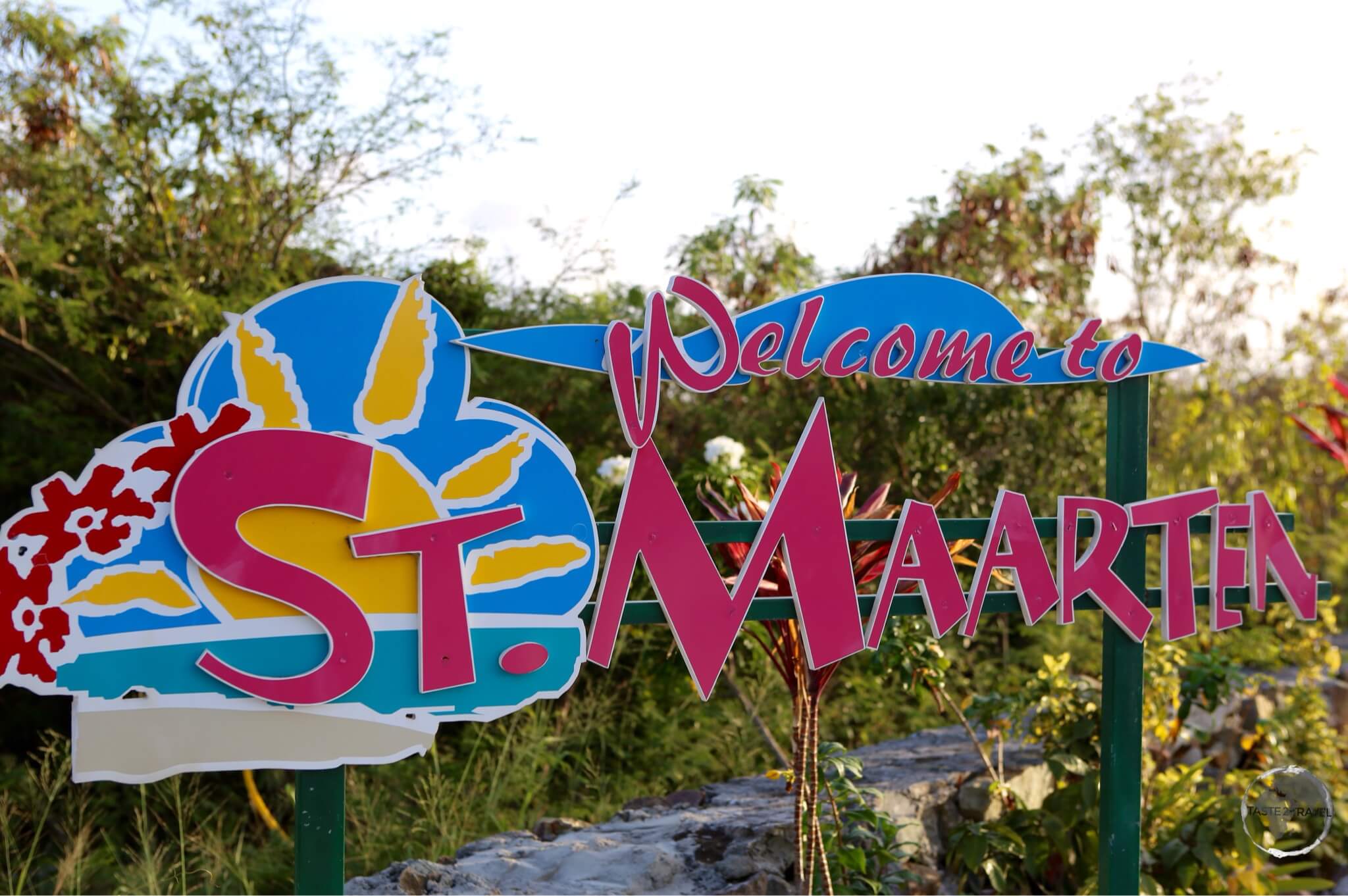
A colourful and funky ‘Welcome’ sign on the Dutch side of the island.
At this time British and French settlements also developed on the island. All this changed in 1633 when the Spaniards, who were determined to maintain a tight control over the salt trade, invaded the island. Attempts by the French and Dutch to protect their settlements were futile, so they retreated, returning only after Spanish troops vacated the island in 1648.
On the 23rd of March 1648, the French and Dutch signed the Treaty of Concordia, agreeing to partition the island and co-exist together in a co-operative manner. Despite the signing of the treaty, both sides continuously jostled for more control of the island. This continued until 1817 when eventually the Treaty of Concordia was enforced, at which point the border that exists today was agreed upon.
In addition to salt mining, the French and Dutch developed sugar plantations, employing African slave labour. Once slavery was abolished, the sugar plantations went into decline with the island now dependent on it’s salt mines. At the height of the industry (1850), more then 330,000 barrels were produced and a third of the island’s population was employed in the industry.
Salt mining eventually declined and most inhabitants left the island to build a life elsewhere. At one point there were just 2000 people living on the island.
The islands’ fortune changed during the second world war when the US Air Force built a base on St. Martin (at present day Princess Juliana International Airport). This provided a gateway to the rest of the world and would allow the island to develop tourism – an industry that is today the mainstay of the economy.
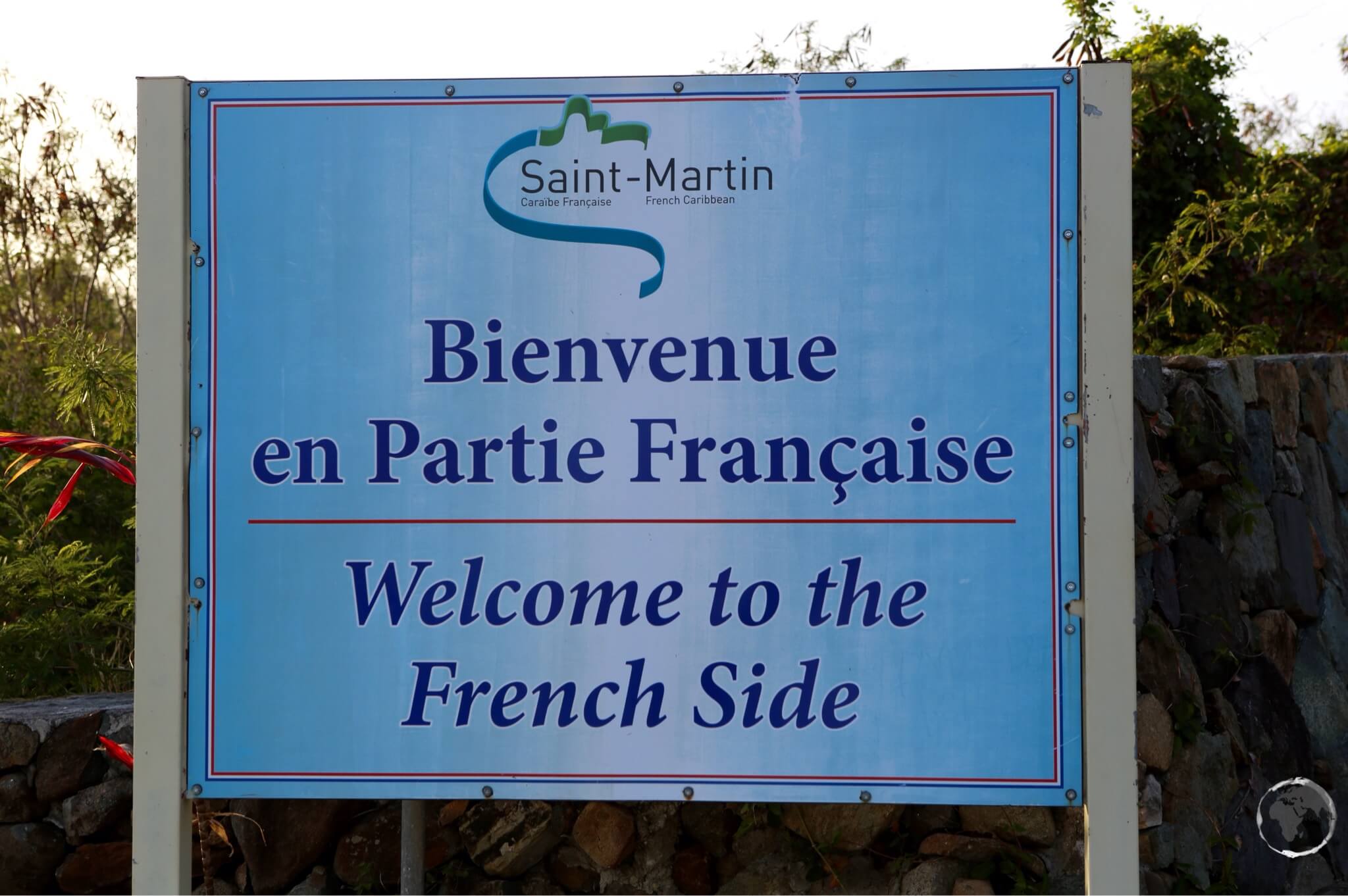
A much more subdued (boring!) ‘Welcome’ sign on the French side of the border.
The island’s duty-free status and white sandy beaches proved popular with tourists, resulting in a period of economic growth, fuelled by commercialism and development.
Today the much busier Dutch side of the island has a more American feel to it. Here you will find large resorts, shopping malls, casinos, cinema complexes, fast food restaurants and lots of duty free shops.
The quieter French side of the island, with it’s more relaxed, quaint towns, fine dining gourmet restaurants and hedonistic nudist beaches has a more distinctly European feel too it.
This mix adds something special to the island, offering visitors two very different travel experiences in one compact destination.
Currency

The Antilles Guilder is the official currency in the Dutch-controlled Sint Maarten.
The two official currencies on St. Martin are the Euro on the French side and the Florin (Netherlands Antillean guilder or florin) on the Dutch side. To make life easier for the tourist hordes, US dollars are also accepted across the island.
The Antillean guilder is the currency of Curaçao and Sint Maarten, which until 2010 formed the Netherlands Antilles along with Bonaire, Saba, and Sint Eustatius. The guilder was replaced by the United States dollar on 1 January 2011 on Bonaire, Saba and Sint Eustatius.
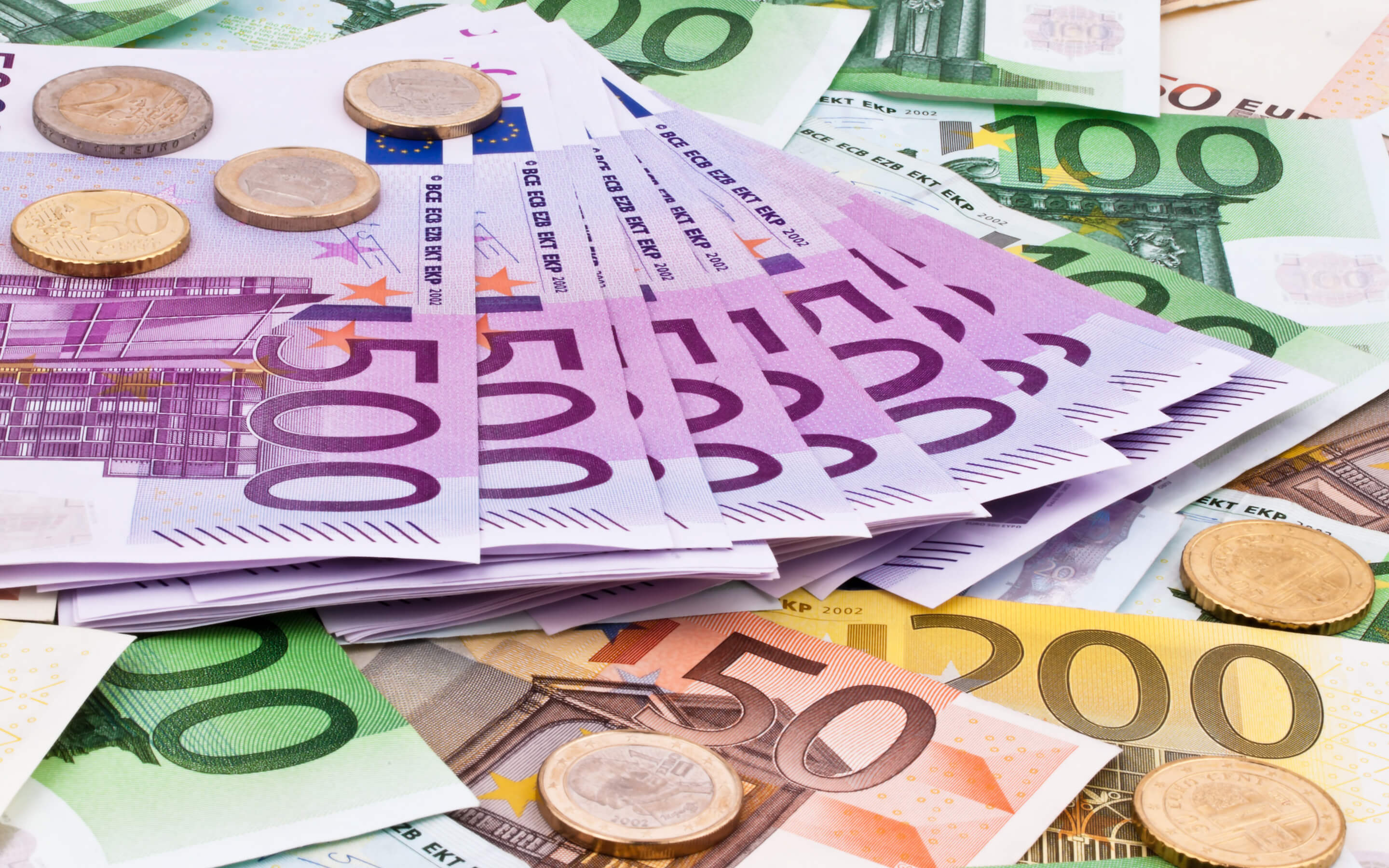
The Euro is the official currency in French St. Martin.
Flags

The flag of Sint Maarten.
As with everything on this divided island, there is a Dutch flag for Sint Maarten and a French flag for St. Martin.
Sint Maarten
On August 19, 1983 the government of Sint Maarten issued a notice in which residents were invited to submit a design for a new flag. The design of 17 year old, Roselle Richardson, was chosen.
Very similar to the flag of the Philippines, the design features a horizontal bicolour of red and blue with the coat of arms of Sint Maarten on a white chevron, thus incorporating the colours of the Dutch flag. The red symbolises solidarity and courage, the blue peace and assurance of pardon, and the white purity and faith.
Set in the centre of the white chevron is the coat of arms of Sint Maarten which features a shield with a rising sun and the motto “Semper Pro Grediens” (English: always progressing).
Saint Martin
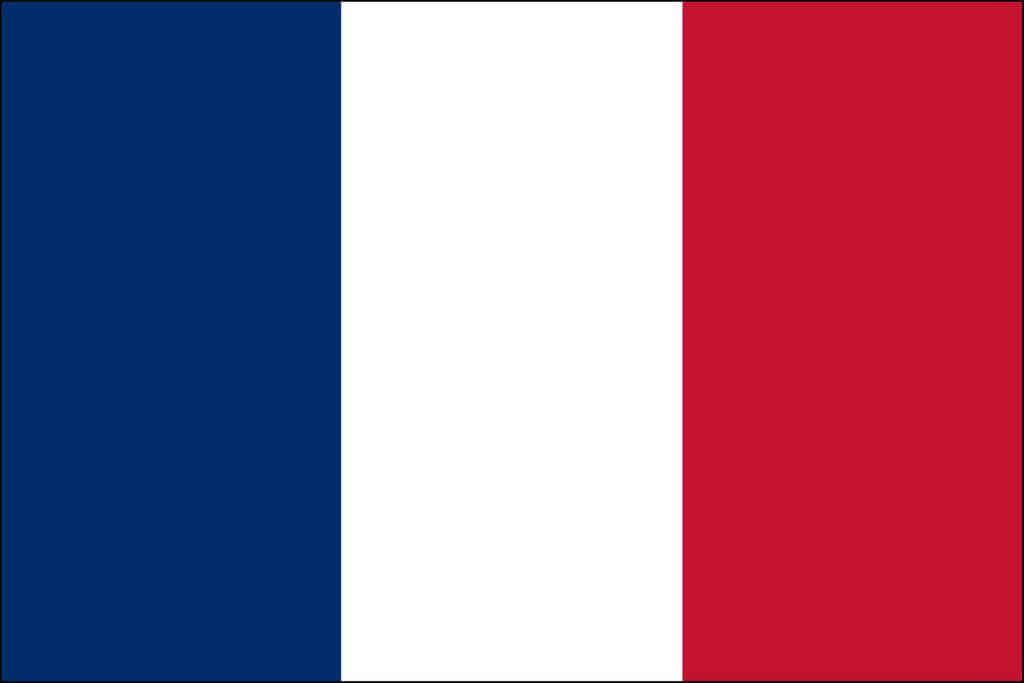
Flag of France
As an overseas collectivity of France, St Martin flies the French tricolour.
Sightseeing
Around Saint Martin
Marigot
With its streets lined with Belle Époque style lamp posts, fine cafés, pâtisseries, boulangeries and a produce market, Marigot has a very European feel to it. This charming waterfront town is the main town and capital on the French side of the island.
Apart from a hillside fort, there is not much to see but it is a pleasant place to spend some time wandering around.
The Anguilla ferry departs from the town dock (see the ‘Getting There‘ section below for more details).
Grand Case
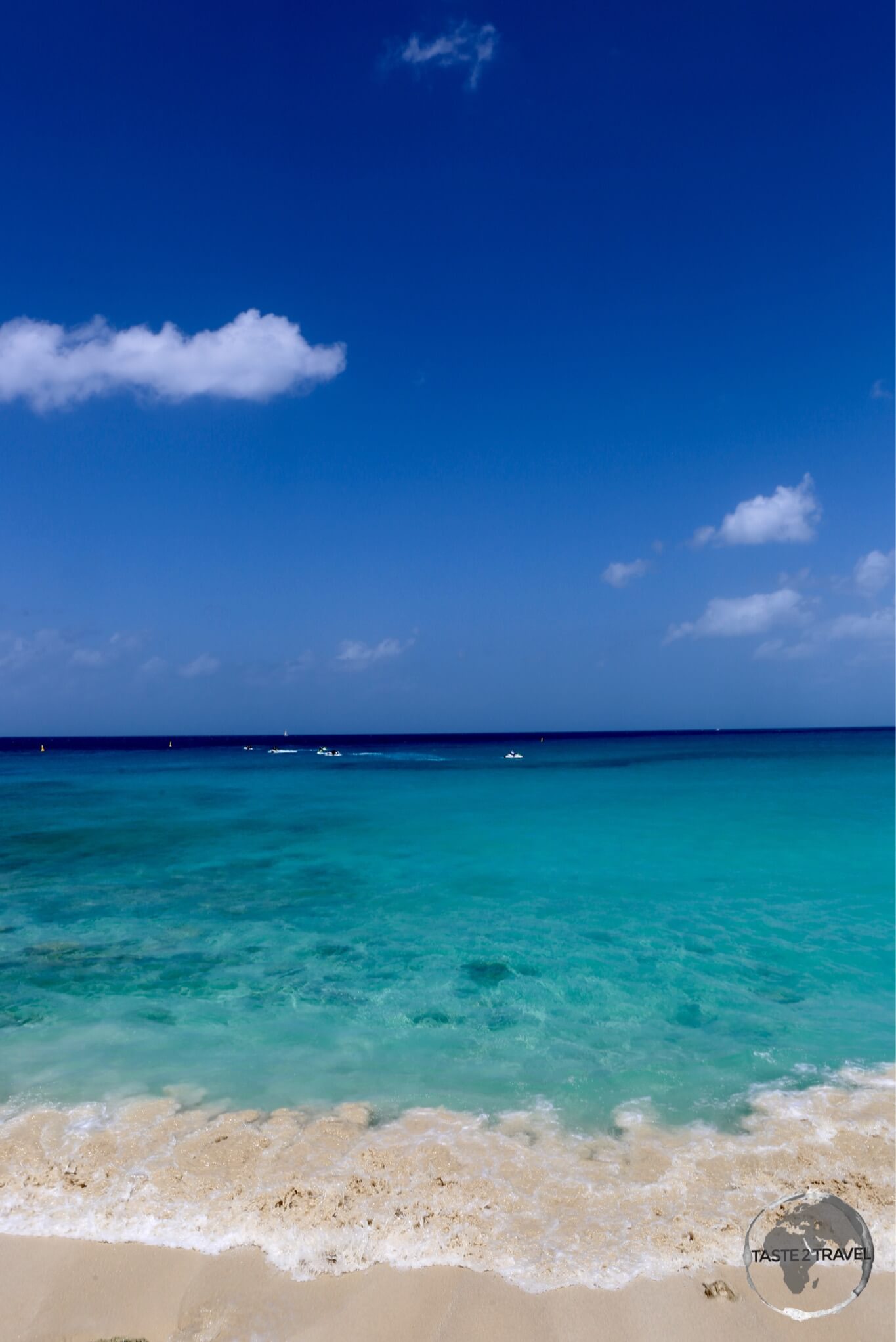
The beach at Grand Case, one of several excellent beaches on the French side of St Martin.
The small beach-side town of Grand Case has been dubbed the ‘Gourmet Capital of the Caribbean’. The town’s Creole architecture evokes the feel of other French colonial New World towns such as New Orleans. Each evening, the fine-dining restaurants along the beachfront road place their menus and specials out front. Would-be diners stroll along the strip until they find a place that strikes their fancy. You should ensure that you eat at least one meal here during your stay – you will not be disappointed.
While dining is the premier attraction, there’s also a decent sandy beach, which is an ideal place to swim and watch the sunset. The town offers several affordable places to stay – mainly small guest houses and inns.
Orient Bay Beach

The most dazzling beach on St. Martin – Orient Bay Beach.
Orient Beach is the most developed, most popular and the busiest beach on the island and is especially known for its ‘swimsuit optional’ section. There’s also a naturist resort located at the southern end of the beach. The beach is the only one on the island with a large number of beach bars and restaurants.
Bay Rouge

The red sand of Bay Rouge, St. Martin.
Located west of Marigot, quiet Bay Rouge (also spelled Baie Rouge) is the perfect place to escape the crowds and spend a relaxing afternoon. There is a beach bar and restaurant available for fuelling.
Around Sint Maarten
Philipsburg

The historic Philipsburg Court House, the centre of the capital of Sint Maarten.
With a population of 1,327 inhabitants, Philipsburg is the largest town and capital of Dutch Sint Maarten. It is the main commercial centre on the island and the place where visiting cruise ships dock. The large cruise ship facility can cater for several enormous cruise ships at any one time, disgorging their passengers who head straight to Front street to enjoy duty-free shopping.
The town is located on a wide sandy bay and is characterised by its many shops catering to cruise ship passengers. There are a number of bars and restaurants along the waterfront.

Philipsburg beach, the centre of action in downtown Philipsburg.
Maho Beach

Air France flight on final approach to Sint Maarten airport, flying low over Maho Beach.
Welcome to plane-spotting heaven and jet-blast central.
Maho Beach is a small stretch of white beach which is famous for its position at the end of the runway of Princess Juliana International Airport. Planes have a low approach to the runway, passing just over the heads of beach-goers. The best time to see the big planes land and take off is between 13:30 and 17:00.
At the end of the beach is the Sunset Bar and Grill, which offers a prime viewing spot. Flight arrivals are posted on a board outside the restaurant.
Maho beach is heaven for plain-spotters and attracts enthusiasts from around the world who gather on the beach to photograph the huge planes approaching to land just over the heads of relaxing holiday makers.
When the larger planes take-off, you can expect to receive a good amount of jet-blast. If your car is stuck on the road directly behind the runway (as does happen as drivers stop to watch the planes land and take off) you can expect to receive a beach full of sand in your car. Best to wind up the windows.
Oyster Pond
Located on the border between the French and Dutch side of the island is tiny Oyster Pond. There is no beach here but rather a picturesque harbour that includes a marina and several restaurants and bars.
The St. Barts ferry departs from here (see the ‘Getting There‘ section below for more details).
Accommodation
There is ample accommodation options on both sides of the island for all budgets. Due to its compact size, everything is a short drive so it doesn’t matter where you base yourself.
I stayed at Princess Heights Luxury Condo Hotel, which is located on a hill overlooking Oyster Pond and Dawn beach. The views from the hotel are spectacular.
I also stayed on the beach at beautiful Simpson Bay at the Atrium Beach Resort & Spa.
There are numerous options available on booking.com
Eating Out
There is no shortage of restaurants, cafes and bars on the island. Restaurants on the Dutch side cater more to visiting American tourists while those on the French side offer a finer European style dining experience.
A highlight is dinner on the beach-front street in Grand Case.
Visa Requirements
There is no physical border between the French and Dutch territories – people and goods may travel freely between the two sides of the island.
Some nationalities require visas for Sint Maarten – check your visa requirements prior to arrival.
Some nationalities require visas for Saint Martin – check your visa requirements prior to arrival.
Getting There
St. Martin is a major transport hub for this part of the Caribbean. The island provides frequent sea and air connections to neighbouring islands.
By Air

On final approach to St. Martin with Winair – passing over Maho beach.
There are two airports on the island, Princess Juliana International Airport – located on the Dutch side and L’Espérance Airport – located on the French side.
The main airport is Princess Juliana International Airport (also known as Saint Maarten International Airport), named after Juliana of the Netherlands, who, as Crown Princess, landed here in 1944 – the year after the airport opened. The airport serves as the base for Winair. Almost all international flights arrive and depart from here. The airport is one of the biggest and busiest in the Caribbean and is best known for its very low-altitude flyover landing approach due to one end of its runway being adjacent to the shoreline of Maho Beach.
The second and much smaller airport is L’Espérance Airport, also known as Grand Case Airport, located on the French side of the island. The airport is used only for smaller aircraft for regional flights to other French islands.
Princess Juliana International Airport
The following airlines provide international connections to Princess Juliana International Airport:
- Air Antilles Express (operated by Winair) – services to Dominica, Guadeloupe, Puerto Rico
- Air Caraïbes – services to Paris (Orly), Haiti (Port-au-Prince), Guadeloupe (seasonal)
- Air France – services to Paris (Charles de Gaulle)
- Air Transat – services to Montréal (Trudeau), Toronto (Pearson)
- American Airlines – services to Charlotte, Miami, Philadelphia, New York (JFK)
- BVI Airways – services to British Virgin Islands (Tortola)
- Caribbean Airlines – services to Jamaica (Kingston), Trinidad
- Copa Airlines – services to Panama City
- Delta Air Lines – services to Atlanta, New York (JFK), Minneapolis/St. Paul (seasonal)
- Fly All Ways – services to Paramaribo
- Insel Air – services to Curaçao, Haiti (Port-au-Prince), Dominican Republic (Santo Domingo)
- Insel Air Aruba – services to Aruba, Dominican Republic (Santo Domingo)
- JetBlue Airways – services to Boston, New York (JFK)
- KLM – services to Amsterdam
- LIAT – services to Antigua, Barbados, British Virgin Islands (Tortola), Puerto Rico, Saint Kitts, Saint Lucia, US Virgin Islands (Saint Croix & Saint Thomas)
- PAWA Dominicana – Dominican Republic (Santo Domingo), Antigua
- Seaborne Airlines – services to Puerto Rico
- Spirit Airlines – services to Fort Lauderdale
- Sunwing Airlines – services to Montréal (Trudeau), Toronto (Pearson), Québec City (seasonal)
- TUI Airlines Netherlands – services to Amsterdam
- United Airlines – services to Newark, Washington (Dulles), Chicago (O’Hare) (seasonal)
- WestJet – services to Toronto (Pearson), Montréal (seasonal)
- Winair – services to Antigua, British Virgin Islands (Tortola), Dominica, Nevis, Saba, Saint-Barthélemy, Saint Kitts, Sint Eustatius.
L’Espérance Airport
The following airlines provide international connections to L’Espérance Airport:
- Air Antilles Express – services to Guadeloupe
- Air Caraïbes – services to Guadeloupe
- St Barth Commuter – services to Saint Barts
By Sea

The ‘Ovation of the Seas’ cruise ship, docked offshore at Philipsburg.
Cruise ships visiting the island dock at the large (offshore) Dr. A. C. Wathey Cruise & Cargo Facility in Philipsburg. Passengers are transferred to the island aboard tender boats.
Inter-Island Ferries
Due to its central location, St. Martin is a hub for ferry services to Anguilla, St. Barts and Saba.
Anguilla

The Anguilla ferry docked at Marigot, St. Martin.
The most popular way to reach Anguilla is via the frequent ferry service which connects Marigot (Saint Martin) with Blowing Point (Anguilla). The service runs every 45 minutes – with the crossing taking 25-minutes. You need to clear customs and immigration at both docks. Currently, schedules and fares are posted on the Anguilla Tourist Board website.
Charter services can also be booked from Blowing Point to Princess Juliana Airport (Dutch St. Maarten)
St. Barts

The Voyager fast ferry (seen here at its dock at Oyster Pond, St. Martin) offers the best connection between St. Martin and St. Barts.
There are daily fast ferry connections between Saint Martin and Saint Barts – operated by the Voyager ferry company. Services run between Gustavia (Saint Barts) and Marigot (Saint Martin), and between Gustavia and Oyster Pond (Saint Martin). From Marigot, the journey is 90-minutes; from Oyster Pond, the ride is 30-minutes.
I travelled to St. Barts from Oyster Pond with Voyager. It’s a fast, reliable and comfortable journey across the Saint Barthélemy Channel.
From Philipsburg (Sint Maarten), Great Bay Express offers a daily fast ferry service (40-min) to Gustavia. Check their website for schedule and fares.
Saba
A ferry service connects Saba with Sint Maarten/ Saint Martin three times a week. The 45-km journey takes one and a half hours. The service is operated by Saba Transport using the vessel Dawn II.
Check their website for current schedules and fares.
Getting Around
As with everything else on St. Martin, there are lots of options when it comes to ‘getting around’.
The best option for exploring the island is to hire a car upon arrival at the airport. Unlike Anglo-Caribbean islands, drivers are not required to pay for a temporary driving permit. Driving is on the right-hand side of the road, with the roads being in very good condition. St. Martin’s road system essentially comprises a ring road that skirts the island’s coastline and smaller roads linking the built-up areas.
Shared minibuses cover most areas of the island. There is no fixed time table however there are dedicated bus stops.
Taxis are also available for hire but do not have meters, instead charging according to a tariff schedule.
That’s the end of my Sint Maarten/ Saint Martin Travel Guide.
Safe Travels!
Darren
Follow me on Instagram:
Further Reading
Other travel reports from the Caribbean region include:
- Anguilla
- Antigua & Barbuda
- Aruba
- Bahamas
- Barbados
- Bonaire
- Bermuda
- Cayman Islands
- Cuba
- Curaçao
- Dominica
- Dominican Republic
- Grenada
- Guadeloupe
- Haiti
- Jamaica
- Martinique
- Montserrat
- Puerto Rico
- Saba
- Saint Barthélemy (Saint Barts)
- Saint Eustatius (Statia)
- Saint Kitts & Nevis
- Saint Lucia
- Saint Vincent & The Grenadines
- Trinidad & Tobago
- Turks & Caicos
- Virgin Islands (British)
- Virgin Islands (U.S.)
Saint Martin/ Sint Maarten Travel Guide Saint Martin/ Sint Maarten Travel Guide Saint Martin/ Sint Maarten Travel Guide Saint Martin/ Sint Maarten Travel Guide Saint Martin/ Sint Maarten Travel Guide Saint Martin/ Sint Maarten Travel Guide
Author: Darren McLean
Darren McLean is an Australian full-time digital nomad who has spent 36 years on a slow meander around the globe, visiting all seven continents and 239 UN+ countries and territories.
He founded taste2travel to pique one’s curiosity and inspire wanderlust.
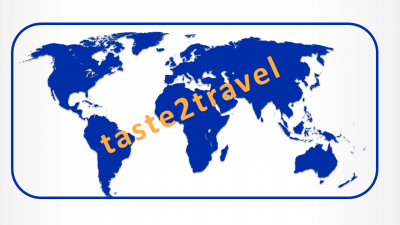






Hi Darren. Tell us more, did you see any aircraft landing when you have visited Maho beach? That must be an incredible feeling, I would love that! Which side of the island did you like more? France or Dutch? It seems to be a difficult decision when everything around show us an impressive nature. I think I would take advantage of both. I also loved the airport name, it is a beautiful name, isn’t it? Thank you again and always for everything you sharing with us. I’m always tuned. (✿´‿`)
Hi Juliana!
Thanks for your comment. I’m sure you love the airport name.
I did see aircraft landing during several visits to Maho beach. The photos on the blog were taken by me from the beach.
As for the island – both sides are very different from each other but equally interesting. I could happily return to St. Martin tomorrow to spend more time exploring and soaking up the ambiance of this special little gem.
Darren